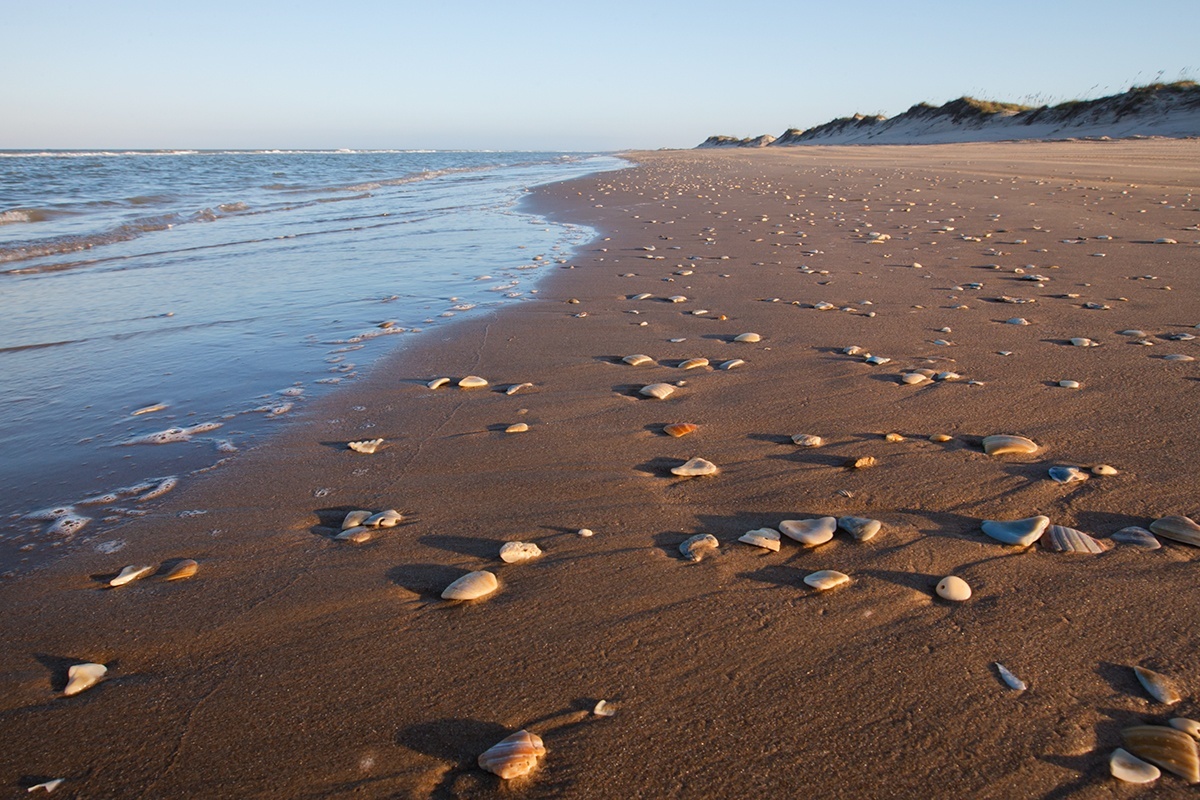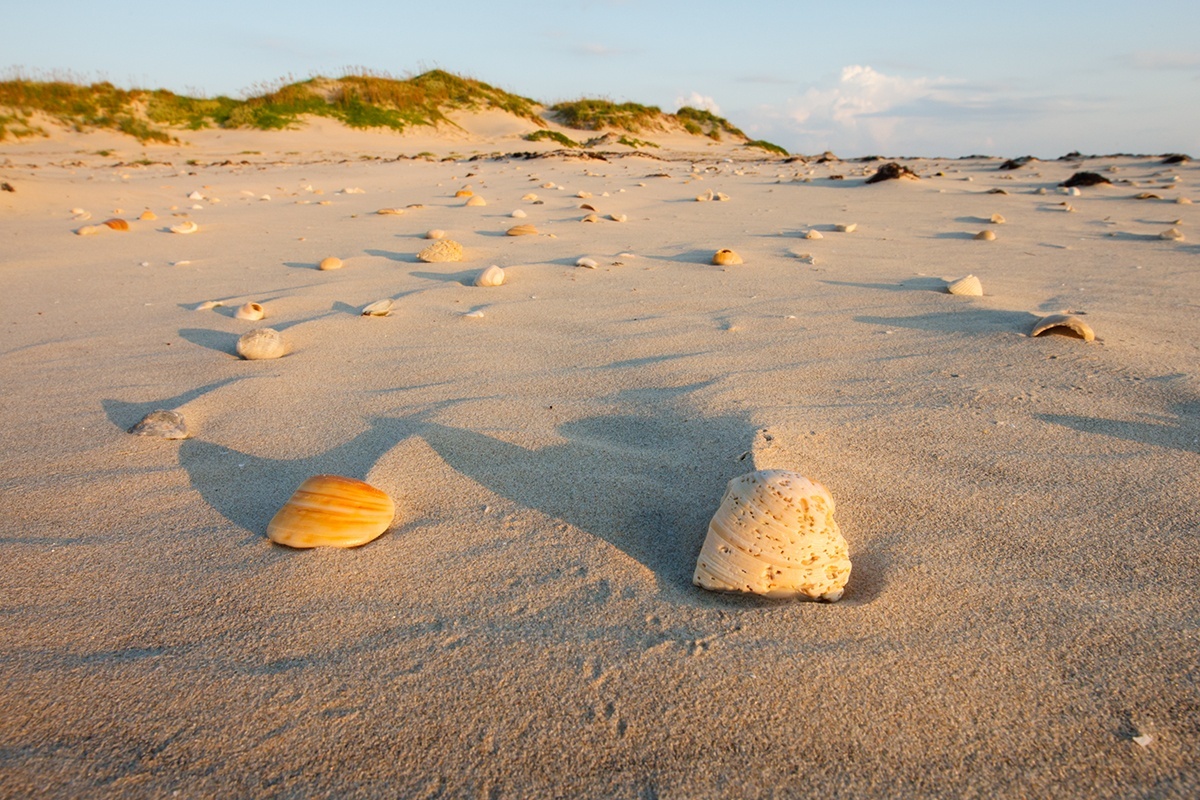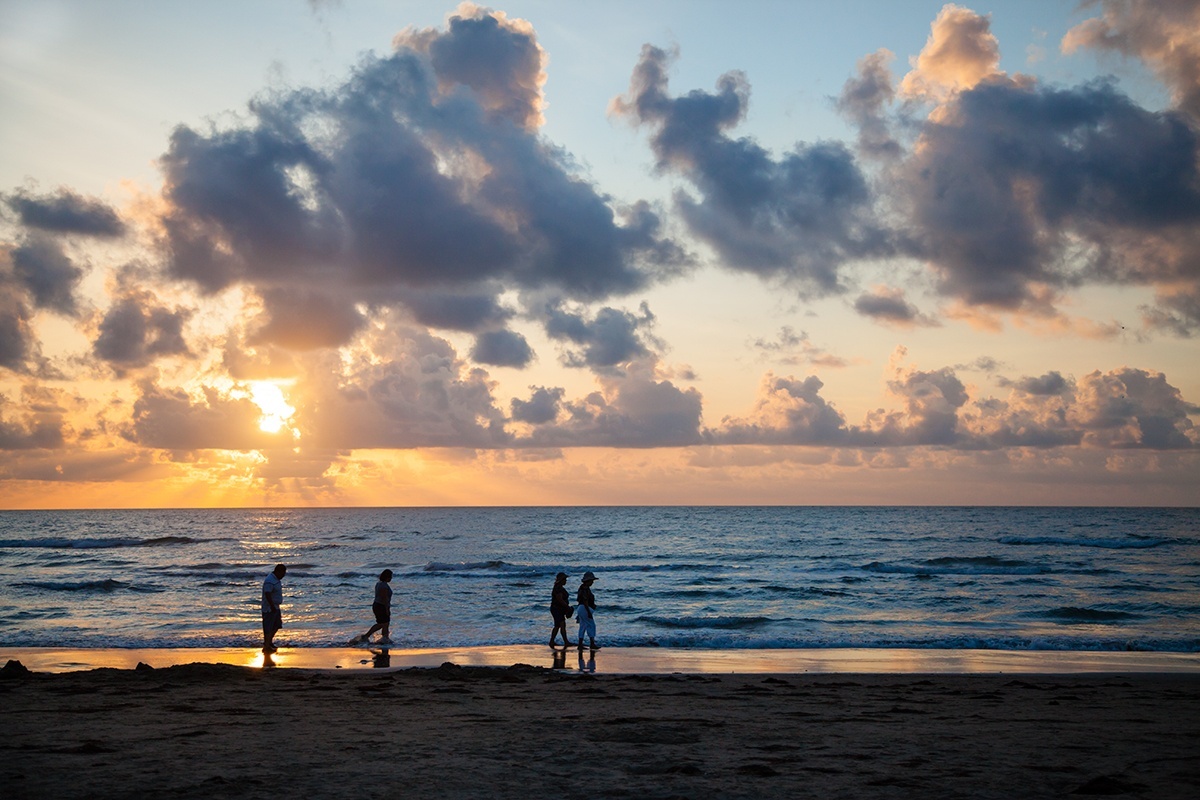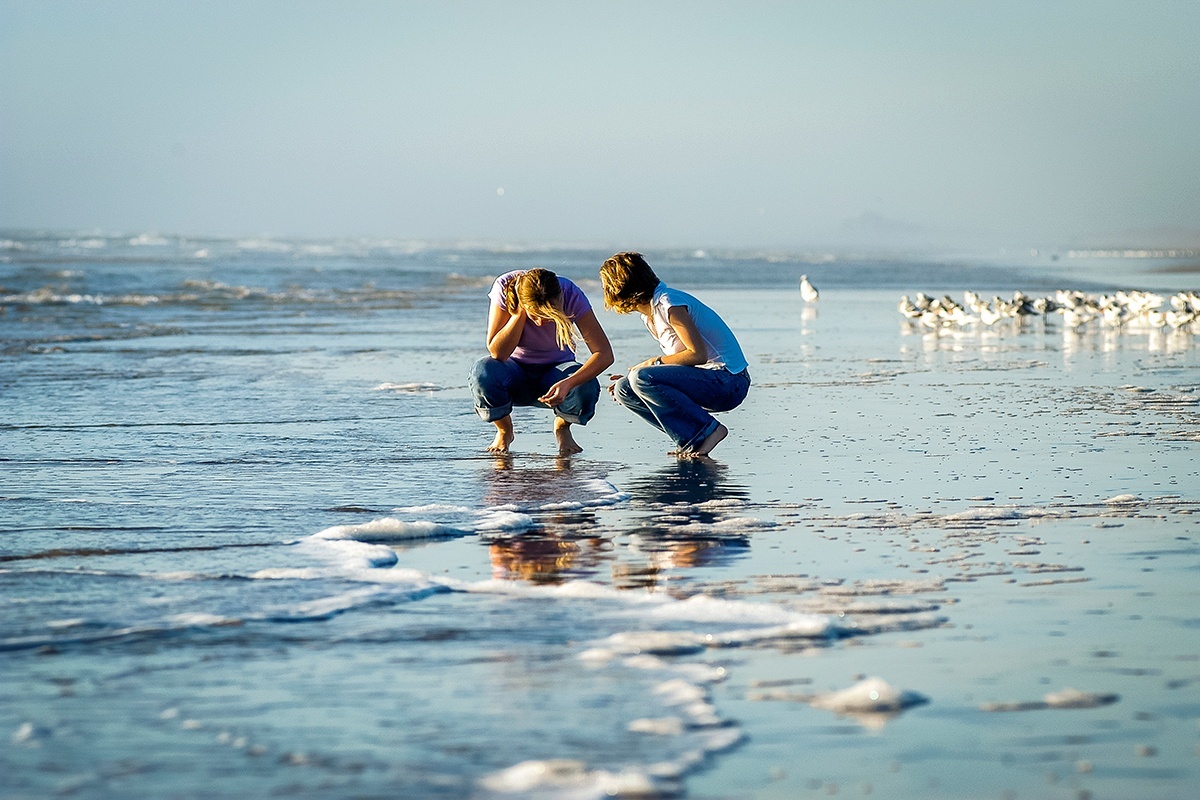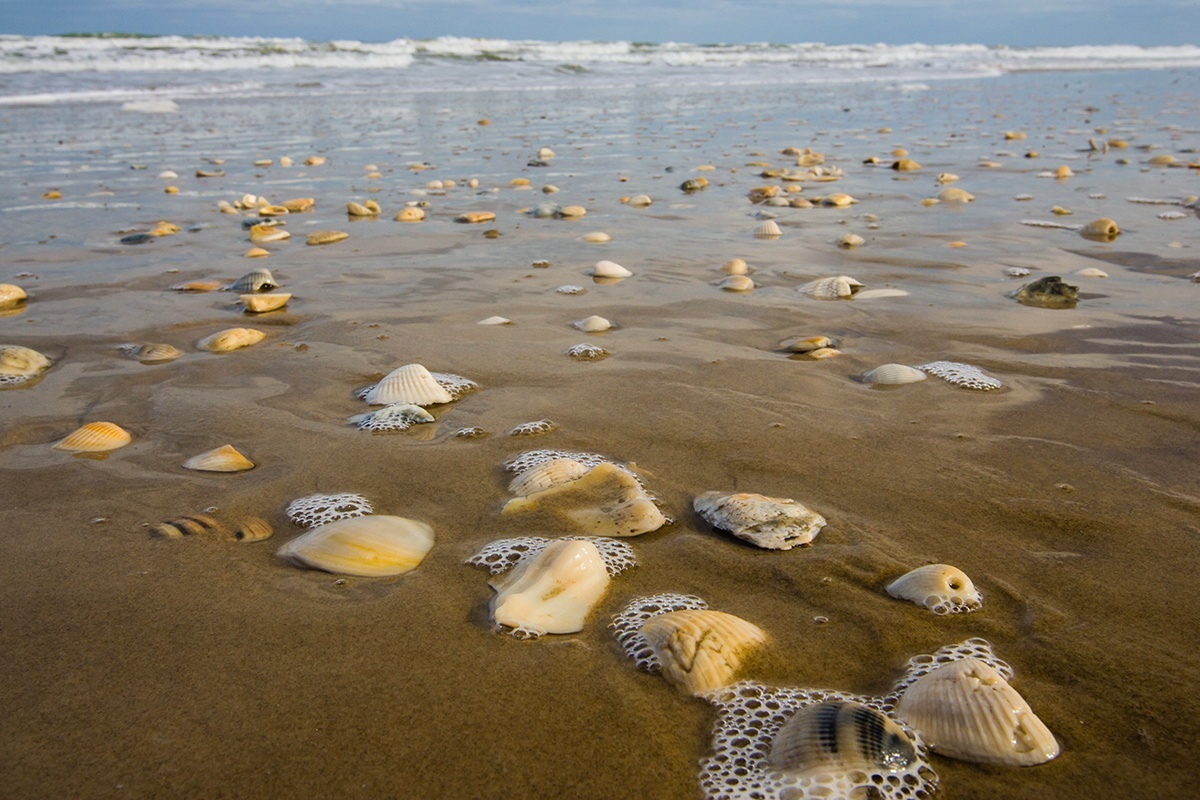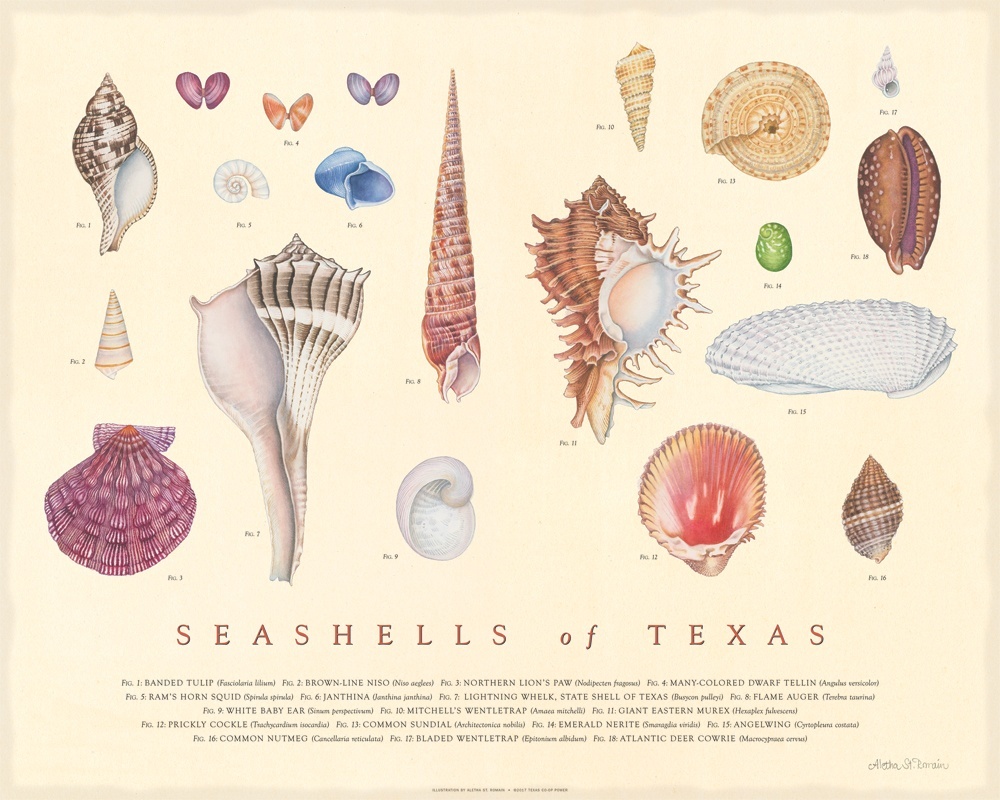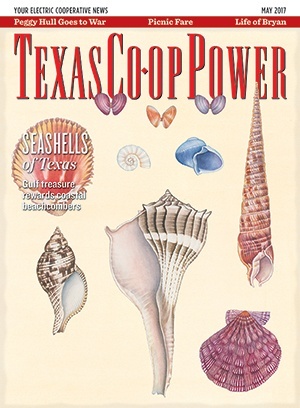Imagine a destination where treasure lies scattered in the open and available within easy reach—a different selection every day. Where you never know what you’ll find, but you always know you will find something good. And everything you find, despite its inherent value, is free.
No need to imagine any longer. The destination exists: It is the Texas beach, and its treasures are seashells.
I spent my childhood beachcombing the broad hems of sand along the Texas Gulf Coast, and these unstructured outings produced pails filled with unrecognizable shards as often as beautiful shells.
In those presunscreen days, my newfound collection often cost me a painful sunburn. But the payoff for my time and discomfort came when I found whole sand dollars, complete lightning whelks and enough other seaside finds to consider the acquisition a bargain.
Besides, I always enjoyed a day on the beach.
Seashells are the exoskeletons, or outer protective coverings, of creatures in the taxonomic phylum Mollusca, commonly called mollusks or molluscs. These animals live inside a thick layer that secretes calcium carbonate to create their shells. Although not all mollusks create shells, and some nonmollusk organisms do produce shell-like coverings, most seashells house a mollusk at some point.
Mollusks come in diverse shapes, but most share a common design: bilateral symmetry, or a left and right side that mirror each other, and a body that typically contains a head, a visceral mass and a large “foot” or muscle the animal uses to move around. Many of our most recognizable seashells—whelks, limpets, cowries and shark eyes—come from gastropods, the largest class in the Mollusca phylum.
On any given Texas beach, you will likely encounter about a dozen variations of shell shapes including turbinate (a sort of pointed swirl), conic (those shells you hold to your ear to hear the sea), ovate and cylindrical.
Another class of Mollusca is the bivalve. The classic bivalve shape—two identical halves hinged together—is the seashell shape many people imagine when the topic is mentioned. Bivalves include oysters, scallops and clams.
More than 100,000 and maybe as many as 200,000 molluscan species inhabit the world, with 2,455 or so found in the Gulf of Mexico and probably more than 1,000 within Texas, according to the Encyclopedia of Texas Seashells (Texas A&M University Press, 2010).
The book considers Texas land to stretch from the dry beach all the way out to the continental shelf and down the slope. With that definition in mind, Texas includes deep-water species, as well as tropical species similar to those found at the Flower Garden Banks National Marine Sanctuary 100 miles offshore, explains John W. “Wes” Tunnell Jr., endowed chair for biodiversity and conservation science at Texas A&M University-Corpus Christi’s Harte Research Institute for Gulf of Mexico Studies.
At least in theory, any of these shells could end up on a Texas beach, he adds.
“When an organism dies offshore, currents or, more commonly, storms, wash the shells onto the beach,” Tunnell says. That means that right after winter or tropical storms is the best time to find shells on the shore. Sometimes the animal dies on the beach, especially when a storm washes up one that doesn’t typically live there.
Empty shells can last for millennia, depending on their thickness. Tunnell says the prettiest shells typically found on the Texas coast include cowries, Mitchell’s wentletrap, lettered olives and cone shells. Another favorite is junonia, a spotted, spindle-shaped prize measuring 3 inches long or more.
Many bivalve shells look plain, but Tunnell points out that some have beautiful colors. Scallops range from bright yellow to red and orange. The small, thin shells of tellins range from bright pink to rose. While the animal is alive, these colors reflect the animal’s genetics and diet. Once a shell lies empty on the beach, sunlight and heat can fade or change its colors over time.
Lightning whelks, the Texas state shell, represent notable finds for beachcombers. These whelks grow as long as 16 inches, with colors ranging from off-white to tan or gray, with narrow, brown streaks of “lightning” from top to bottom. Inside lightning whelks, you’ll see a white surface with a counterclockwise spiral.
Live lightning whelks hang out on the bottom of shallow bays in sand or mud near shoalgrass or turtlegrass meadows. There they feast on oysters, clams and scallops. In March and April, beachcombers might find the empty egg capsules of this animal—pale, semitransparent strands of disk-like capsules up to 33 inches long, each containing as many as 200 eggs. Eggs hatch and grow inside the capsule, eventually emerging as miniature whelks, complete with shells.
Throughout history, humans have used shells to make tools, arrowheads, beads, bracelets, boxes, rattles, drums and trumpets. Shells even served as currency. Native Americans in Texas ate lightning whelks and used their shells for ceremonial implements, tools, cups and bowls. Galveston Island State Park Ranger Lisa Reznicek reports that Native Americans on Galveston considered these unusual left-opening shells to hold magical powers.
Regardless of how you might use the shells, Texas law allows only hand collection of live lightning whelks and other saltwater mollusks and prevents overharvesting by imposing limits on the number of live creatures a collector can keep. If you decide to gather live whelks or other mollusks, you’ll need to purchase a fishing license with a saltwater fishing stamp.
Everyone is free to collect empty shells on Texas beaches. Authorities suggest you take shells only as personal souvenirs, not for commercial purposes, and leave any shell with a living animal inside or connected to it on the beach. Remember that hermit crabs often make homes of unoccupied lightning whelks and other shells, so make sure any shell you pick up to take home is truly empty.
“The state of the art, so to speak, is not to collect live things, just the empty shells themselves,” Tunnell says. “That is generally believed to be fine. You won’t be hurting the environment.”
Collecting your own shells is probably better for the sea creatures than buying shells, he adds. Shells sold in shops generally originate in the Pacific or Indian oceans, where overcollection of certain shells can damage the environment by endangering the population of sea creatures. “A market for certain rare shells can cause a problem if suppliers collect too many,” Tunnell says. “In some places it is illegal, and in some places it should be illegal.”
Another disadvantage of buying shells is that information providing the shell’s origin is sometimes inaccurate. Unscrupulous dealers paint or otherwise alter shells to enhance their appearance. When you order online, what you see will not always be what you get.
Those new to beachcombing can learn the ropes on scheduled beach walks held at Galveston Island State Park every Saturday from late March to late November. Knowledgeable guides explain what is commonly found on the beach and why. The park’s nature center and office also offer shell identification charts and guidebooks.
Mustang Island State Park near Port Aransas offers regular beach walks—two-hour affairs that include hunting for shells, identifying birds and exploring around the jetties. Park interpreter Eric Ehrlich says low tide the week after an Arctic front makes for the best beachcombing. Shells common on this beach include whelks, coquinas, cockles and shark eyes. Ehrlich’s favorite shell is the more uncommon murex.
At Padre Island National Seashore, visitors may keep up to a 5-gallon bucket filled with found treasures such as unoccupied seashells for personal use. Commercial shell gathering is forbidden. “We’re pretty serious about that,” says ranger Patrick Gammon, who adds that currents from all over the world converge here, making for particularly rich treasure hunting.
Beachcombers are likely to find whelks, sundials, crab shells and sand dollars. The last technically aren’t shells, but skeletons of an echinoderm, or sea urchin, that lives on the sea bottom. While alive, the urchins are covered with tiny hairs, but once the animal dies, the hairs fall off to reveal an attractive pattern. The seashore here also serves up a wealth of sea beans, which are seeds and not shells but are still considered worthy of collecting.
Rangers lead scheduled beach walks starting at Malaquite Visitor Center and give deck talks using a “touch table” that contains just about anything found on the beach. Gammon reports that shark eyes and giant purple acorn barnacles are common here. His favorite find is a calico crab shell. “They’re beautiful but very fragile,” he says.
Whatever beach you comb, take a close look at the wrack line, that line of debris on the beach after high tide. That’s a good place to find one of Reznicek’s favorite shells, the shark eye or moon snail. She loves to tell youngsters how the creature that creates this shell uses chemical secretions from its projecting tongue, called a radula, to drill a perfectly circular hole in another shell. It squirts an enzyme through the hole that enables it to slurp out the animal living inside. If you find a shell with a perfectly circular hole in it, most likely a moon snail is to blame.
“Every day there is something new on the beach,” Reznicek says. “It is so dynamic and changes so often—sometimes even in an hour. Collecting shells feels almost meditative.”
A meditation replete with treasure.
——————–
Regular contributor Melissa Gaskill specializes in science, nature and travel.
